| Curtiss SBF-4E "Helldiver" (aboard USS Saratoga, Bikini Atoll) | |
 | 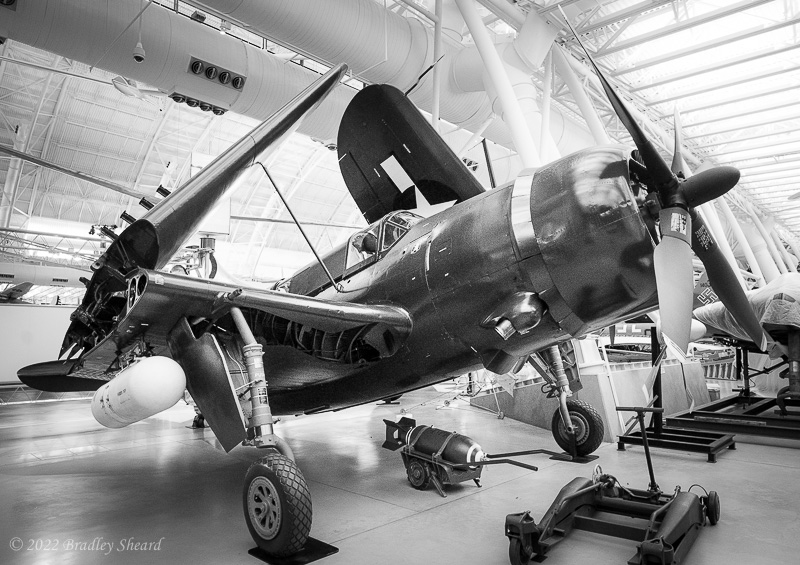 |
| SBF-4E "Helldiver" inside the hanger deck of USS Saratoga (July 1996, film) | SBC2-5 "Helldiver" on display in the Smithsonian Steven F. Udvar-Hazy Center (digital, 2022) |
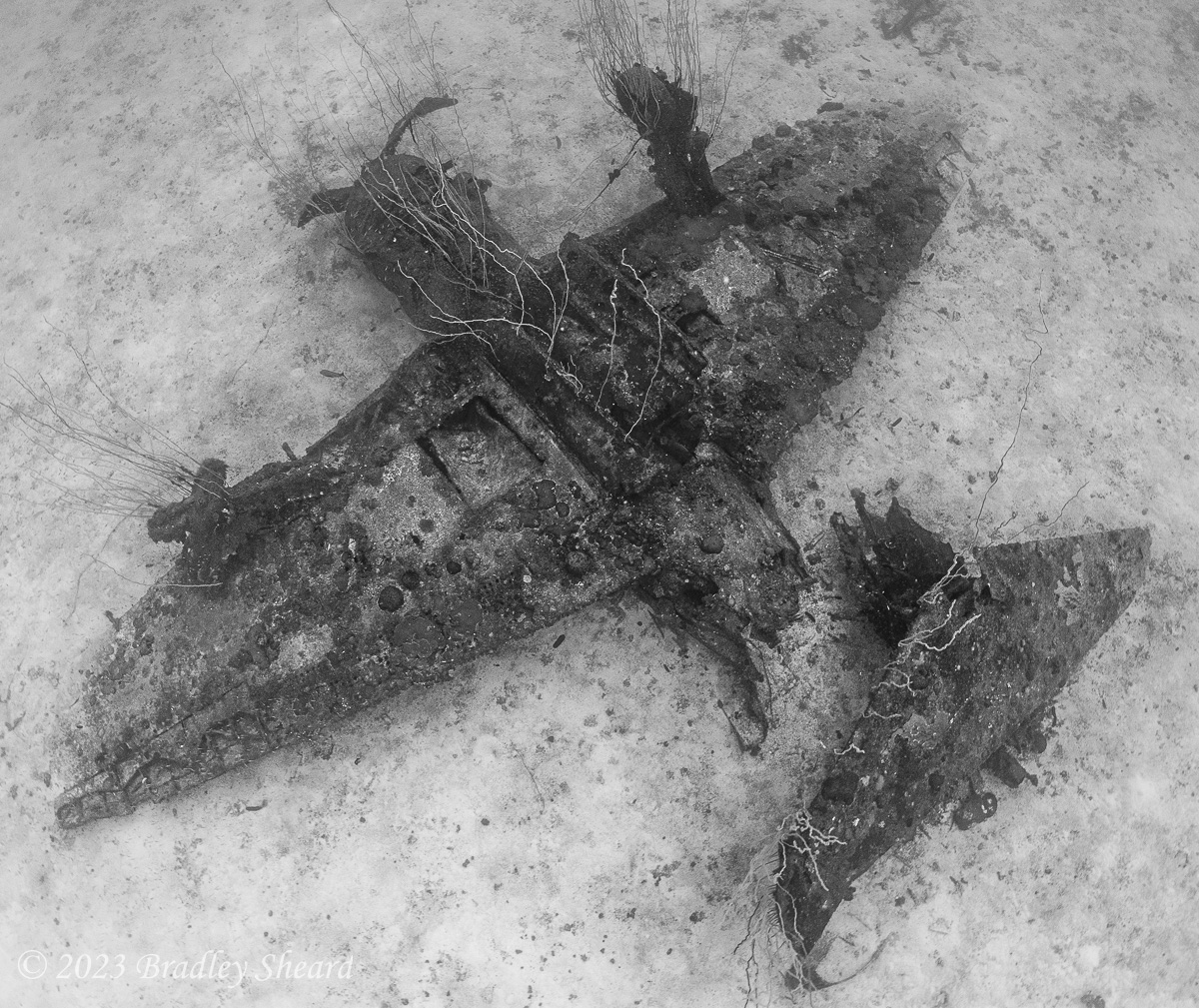 | 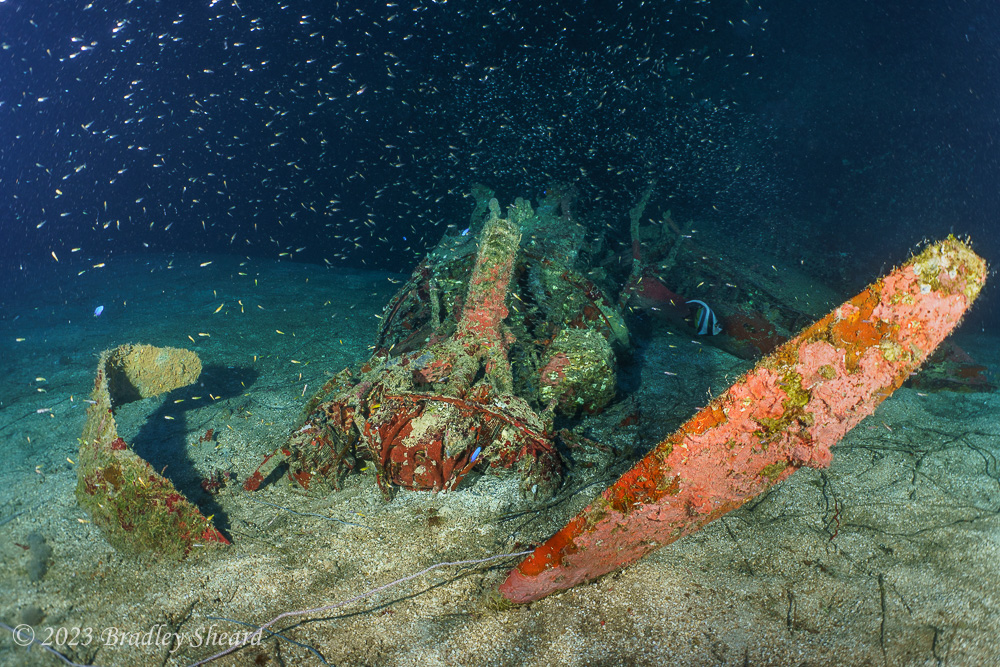 |
| SBF-4E "Helldiver" lying upside-down in the sand off Saratoga's starboard bow, one of the aircraft swept off her flight deck by the Baker blast (May 2023, digital) | Another "Helldiver" that was on the Saratoga's flight deck during the Baker blast; the nose and part of the wing sits under the starboard forward gun tub, while its likely tail lies on off the port bow (digital, 2023) |
|
The Curtiss SB2C "Helldiver" was a US Navy diver bomber intended to replace the front-line Douglass SBD, and was intended to carry a larger payload, with more range, as well as incorporating folding wings to allow more planes to be fit on board each aircraft carrier. There were many "teething problems" that had to be ironed out during its development, particularly with regards to suitability for aircraft carrier operations. The fixes delayed production and introduction into the fleet, and the aircraft did not see combat operations until November 1943 when the USN raided Rabaul. The aircraft was apparently quite difficult to fly, and pilots nicknamed it "The Beast." Nevertheless, 7140 of the aircraft were produced in a number of variants. The aircraft (top left) shown here was photographed inside the aircraft carrier USS Saratoga, sunk during the atomic bomb tests at Bikini Atoll in 1946. Note it is designated an SBF--the designation indicating that it was Canadian built. Two others (above) lie in the sand alongside the aircraft carrier, swept off the flight deck during the atomic blast that sank her. | |
| Grumman TBM-3E "Avenger" (aboard USS Saratoga, Bikini Atoll) | |
 | 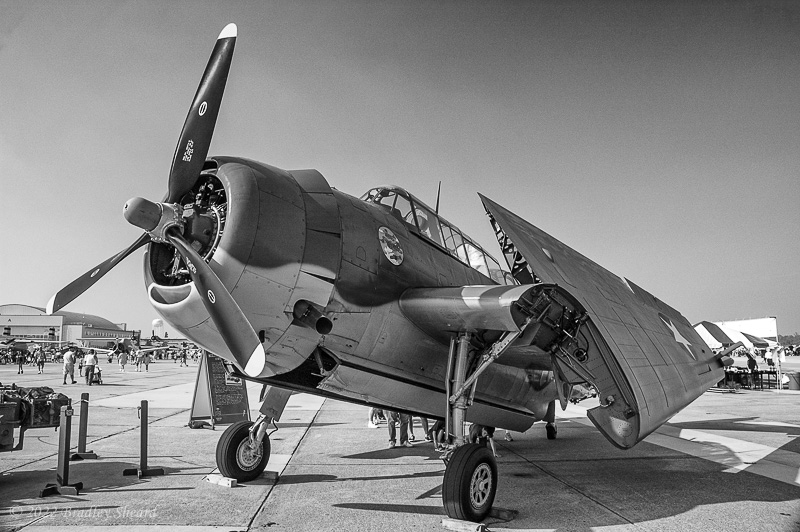 |
| Grumman TBM-3E "Avenger" inside the hanger deck of USS Saratoga (July 1996, film) | Grumman TBM-3 "Avenger" on display at Oceana airshow (digital, 2005) |
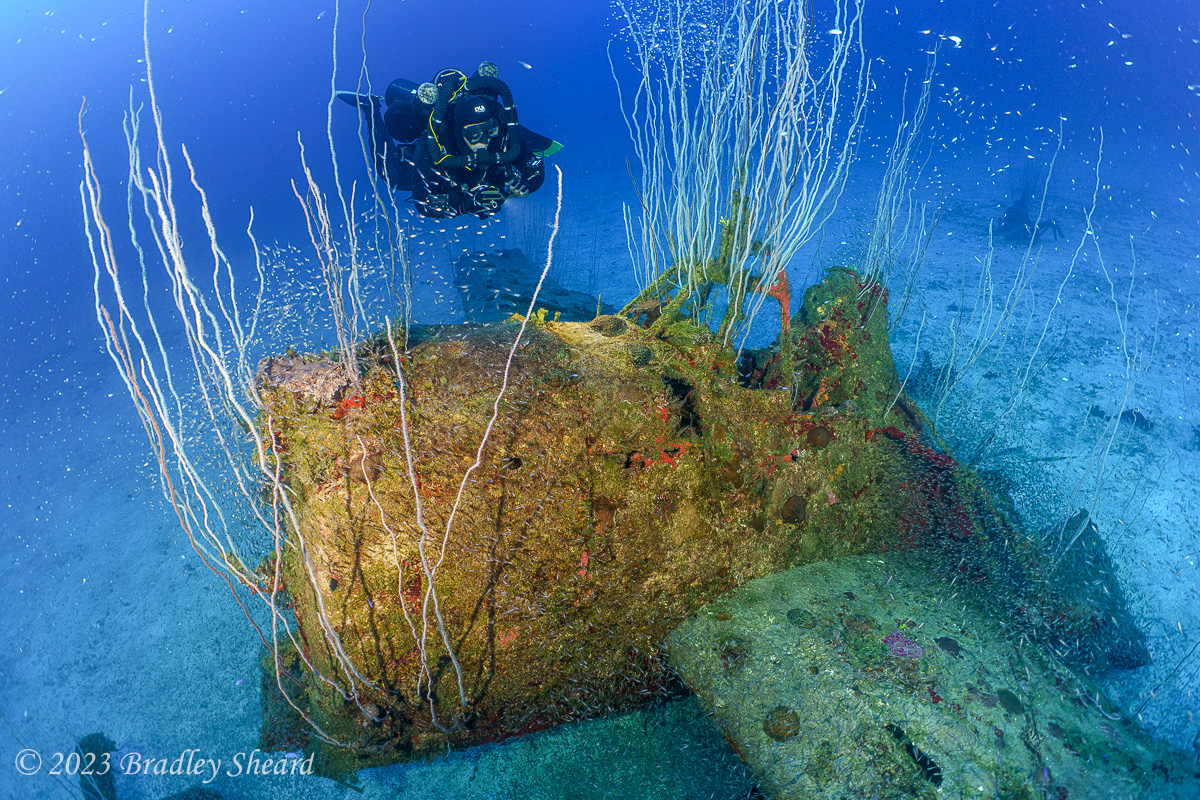 | 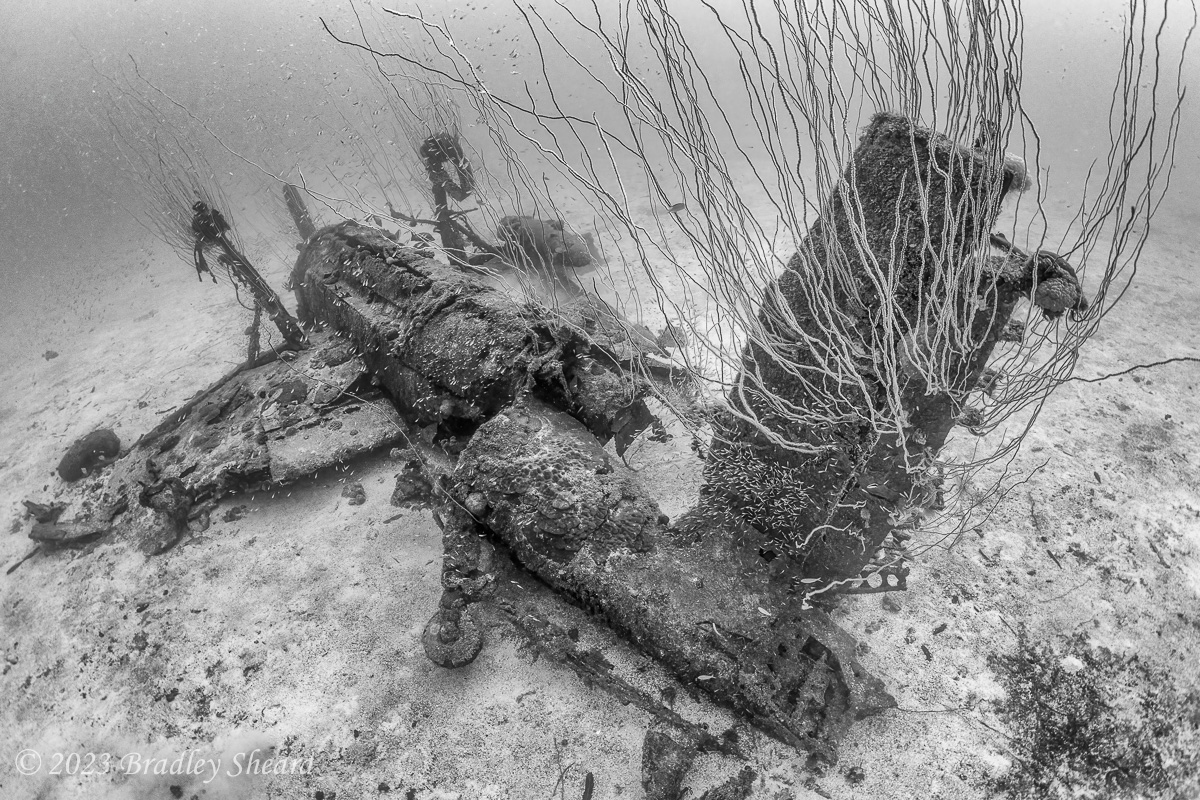 |
| Grumman TBM-3E "Avenger" sitting upright in the sand off the Saratoga's port stern (May 2023, digital) | Another Grumman TBM-3E "Avenger" upside down off the Saratoga's starboard bow (digital, 2023) |
|
The Grumman TBF "Avenger" torpedo bomber was a large, carrier based airplane that replaced the TBD "Devastator." The Devastator was the US Navy's torpedo bomber at the beginning of the war, but proved to be highly vulnerable in combat due to its slow speed, lack of armor and self-sealing fuel tanks. The Avenger was a three-seat aircraft that was also used for horizontal bombing, and proved to be very versatile in combat, with a total of 9839 being built. The original designation of TBF indicated it was built by Grumman, while the TBM designation was used for those built by General Motors under license. The aircraft (top left) shown here was photographed inside the aircraft carrier USS Saratoga, sunk during the atomic bomb tests at Bikini Atoll in 1946. Note Grumman's unique and patented wing fold mechanism, allowing the wings to fold backward alongside the fuselage, making it more compact and thus allowing more of the planes to be carried aboard each carrier. The two lower aircraft were originally on the flight deck, and were blown overboard by the Baker blast, and now sit in the sand alongside the aircraft carrier's wreck. | |
| Mitsubishi A6M "Zero" | |
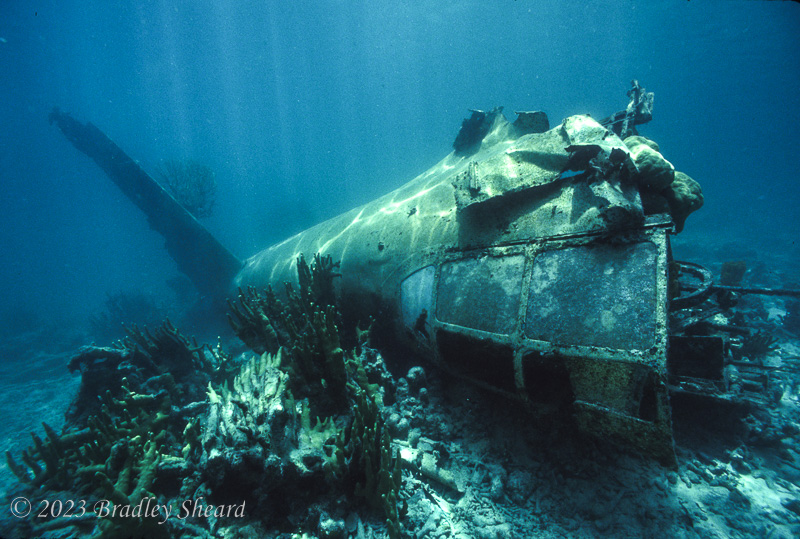 | 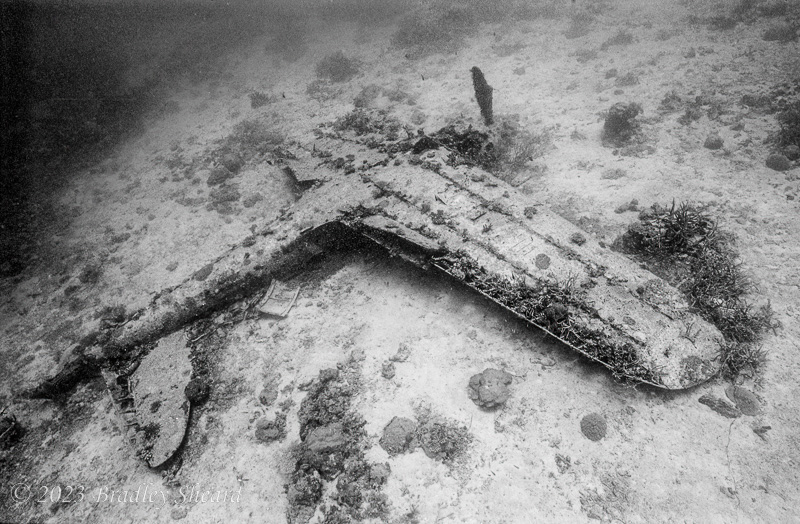 |
| rear half of Japanese "Zero" in Palau (2009, film) | Japanese "Zero" fighter, Palau (2009, film) |
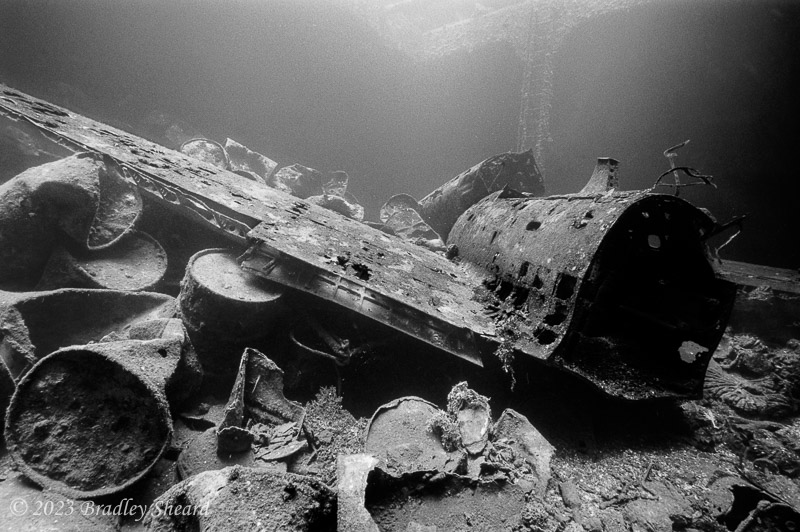 | 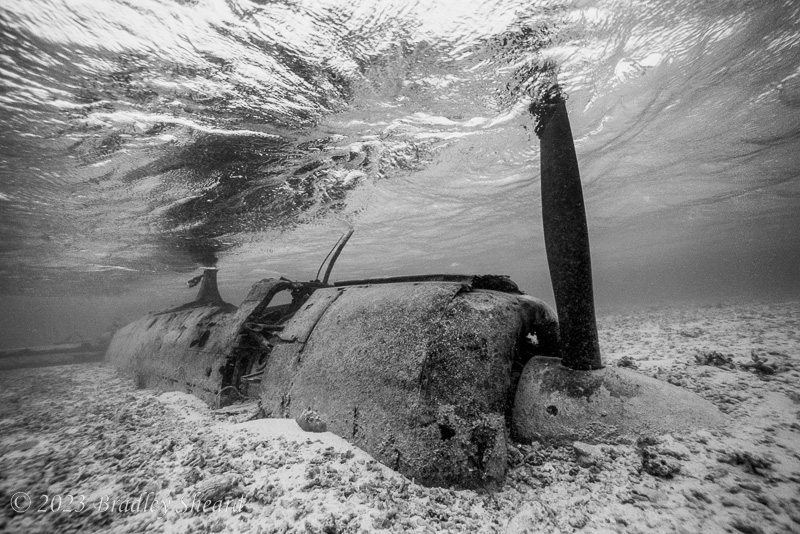 |
| Japanese "Zero" fighter inside hold of Fujikawa Maru, Truk (2004, film) | Japanese "Zero" fighter, Palau (2009, film) |
|
The A6M "Zero" was Japan's premier carrier-based fighter plane throughtout the Pacific war. In 1942 it outclassed Allied carrier-based fighters in speed, rate-of-climb and maneuverablitiy, making it a formidable foe. Early in the war, the general advice for American fighter pilots was simply not to dogfight with a Zero, because you will lose. Allied pilots flying Grumman "Wildcats" quickly learned tactics that allowed them to compete with and shoot down the Zero, however. The Zero's vulnerability lay in its extremely light-weight construction (which enabled its high performance), making it incapable of absorbing much damage and staying aloft. This light weight construction, combined with a lack of self-sealing fuel tanks, meant that once hit, more often than not the Zero would burst into flames and go down. American Wildcats, however, had self-sealing fuel tanks and were robustly built by what came to be known as the "Grumman Iron Works", and could absorb significant punishment before being knocked out of the sky. The Grumman planes also had armor plating to protect the pilot from enemy bullets, something the Zero lacked. | |
| Mitsubishi A5M "Claude" | |
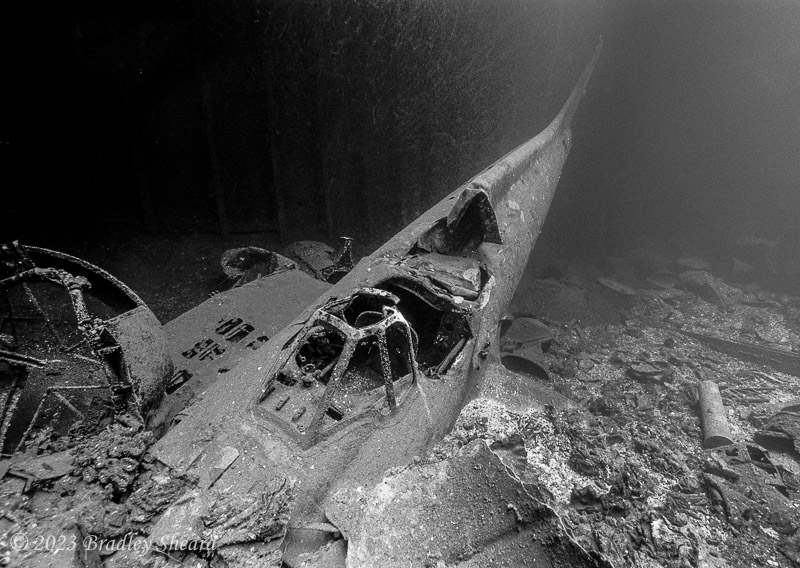 | 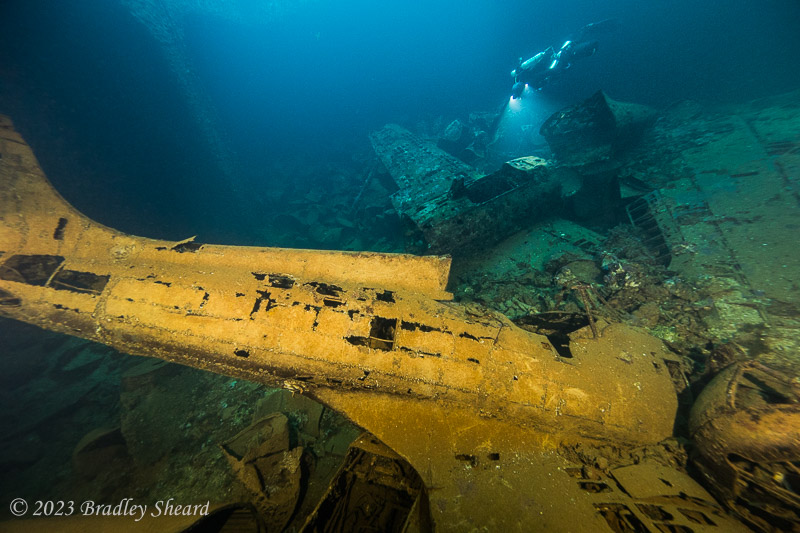 |
| Rare specimen of a Japanese A5M "Claude" fighter aircraft in the hold of the Fujikawa Maru (left: 2009, film; right: 2018, digital) | |
|
The A5M "Claude" was the predecessor of the famous A6M "Zero" fighter. It was a rather small fighter aircraft, with fixed (non-retractable) landing gear and an open cockpit with a fixed windscreen. One of the distinctive features that identifies this as a "Claude" is the "spine" running along the top of the fuselage from behind the cockpit to the vertical stabilizer. | |
| Nakajima B6N "Jill" torpedo bomber (Truk Lagoon) | |
 | 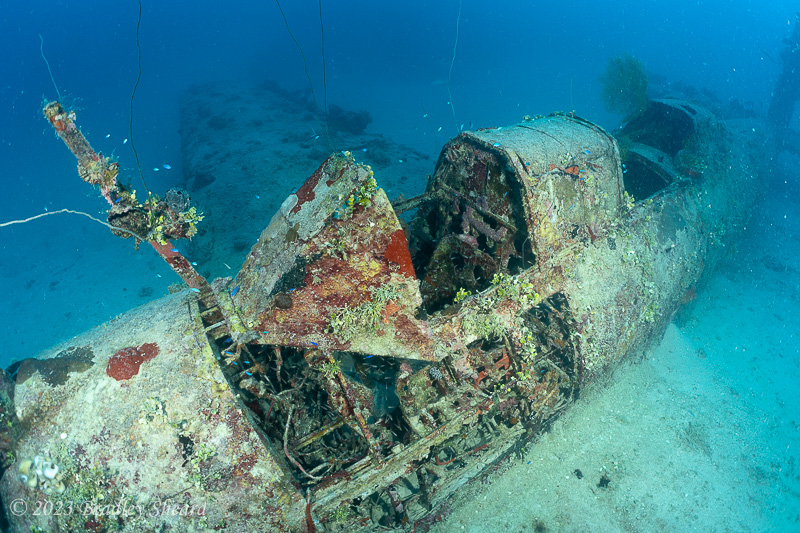 |
| Two views of a "Jill" torpedo bomber resting in ~120 ft of water in Truk Lagoon (March 2023, digital) | |
|
The Nakajima B6N "Jill" was Japan's front-line carrier-based torpedo bomber during the later years of the war; the "Jill" succeded the B5N "Kate" torpedo bomber, which was the standard torpedo bomber early in the war. The guides in Truk called this aircraft the "deep Jill." This aircraft is indeed a "Jill" torpedo bomber. Identifying features include the forward-raked antenna mast forward of the cockpit, the intake inlet fairing on top of the engine cowling and the uniquely shaped vertical stabilizer. Both planes were highly capable torpedo bombers that were responsible for sinking many Allied ships, including those sunk at Pearl Harbor. It was not the aircraft's characteristics that made it so successful, however, but the highly-advanced Long Lance torpedoes it carried, which were far superior to Allied torpedoes. | |
| Nakajima C6N Saiun "Myrt" reconnaissance aircraft (Truk Lagoon) | |
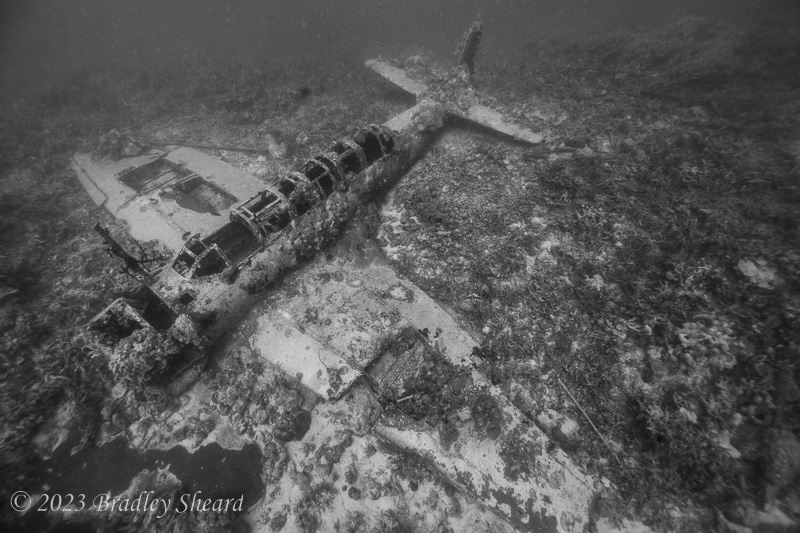 |  |
| Two views of a "Myrt" reconnaissance aircraft resting in ~50 ft of water in Truk Lagoon (October 2015, digital) | |
|
The Nakajima C6N "Myrt" was a carrier-based reconnaissance aircraft that closely resembles both a "Kate" and "Jill" torpedo bomber. The guides in Truk called this aircraft, which sits in ~50 feet of water, a "Jill," but based on a number of features it appears to be a "Myrt." Some of the identifying features include the radio mast forward of the cockpit (Kates did not have this feature); the longer canopy aft of the pilot, which has six sections rather than the five of a "Jill;" the rudder (right) extends well beyond the horizontal stabilizer and elevators unlike either a "Kate" or "Jill;" the aft end of the canopy is sharply angled rather than curved like a "Jill;" lack of a ventral air intake forward of the cockpit, which is a distinctive feature of a "Jill." | |
| Kawanishi H6K "Mavis" flying boat (Guadalcanal) | |
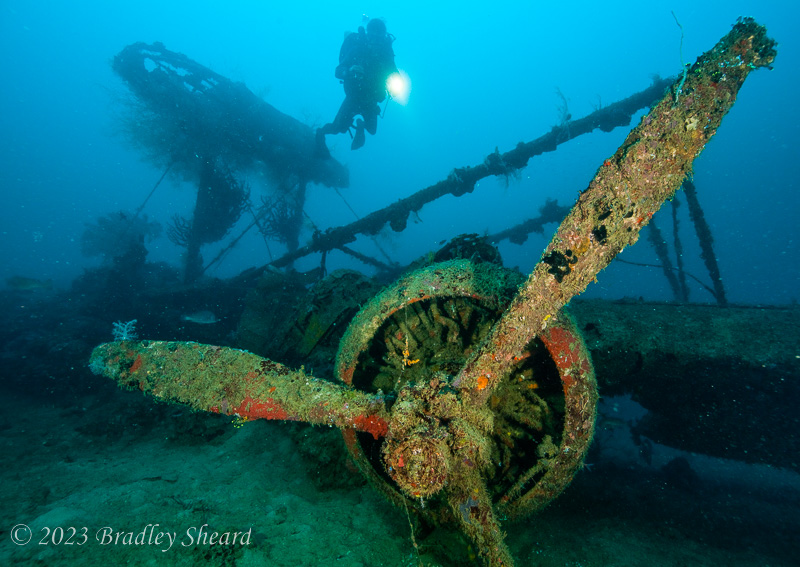 | 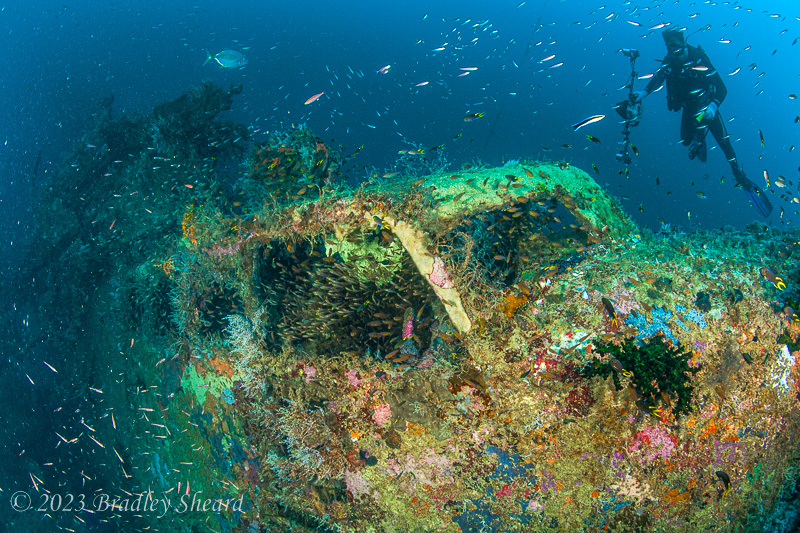 |
| Two different "Mavis" flying boats sunk off Tulagi in the Solomon Islands (November 2006, digital) | |
|
The Kawanishi H6K "Mavis" was a four-enging flying boat used by the Japanese Navy throughout the Pacific region. The two different aircraft shown here were among seven that were sunk during the opening phase of Operation Watchtower (the invasion of Guadalcanal) on August 7 1942. Sixteen Grumman F4F-4 "Wildcats" from the USS Wasp destroyed the Japanese "Mavis" flying boats while still at anchor off Gavutu Island. Today they sit in various states of decay in 80-100 feet of water. | |
| Kawanishi H8K "Emily" flying boat (Truk Lagoon) | |
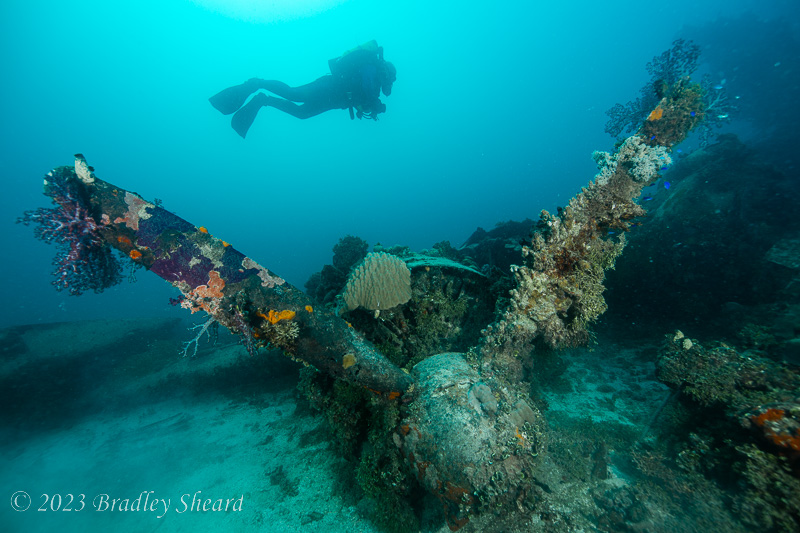 | 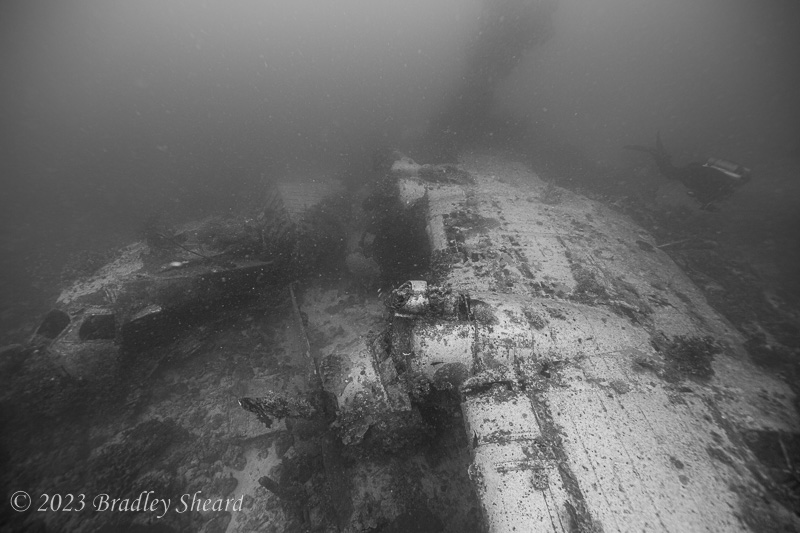 |
| A Japanese "Emily" flying boat sunk in Truk Lagoon (October 2015, digital) | |
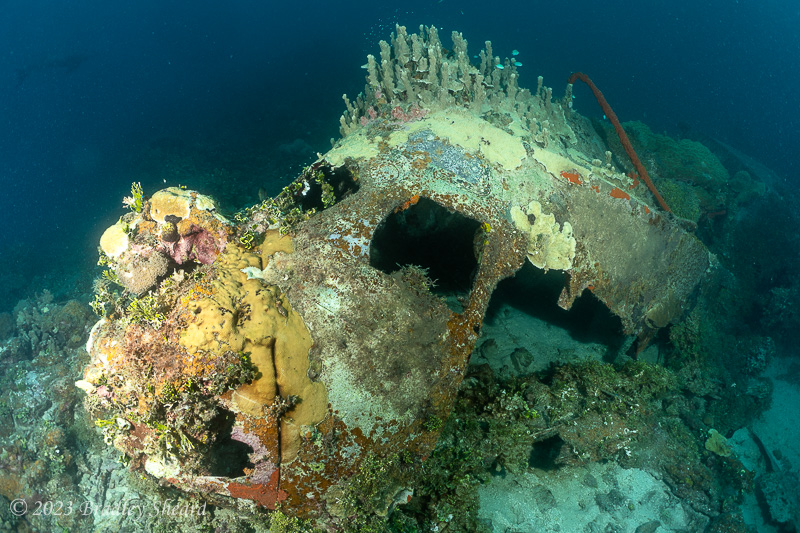 |  |
| Nose section of "Emily" flying boat, inside and out (March 2023, digital) | |
|
The Kawanishi H8K "Emily" was basically a larger version of the H6K "Mavis" flying boat above. This one sits upside-down in about 50 feet of water in Truk Lagoon. | |
| Mitsubishi G4M "Betty" bomber (Truk Lagoon) | |
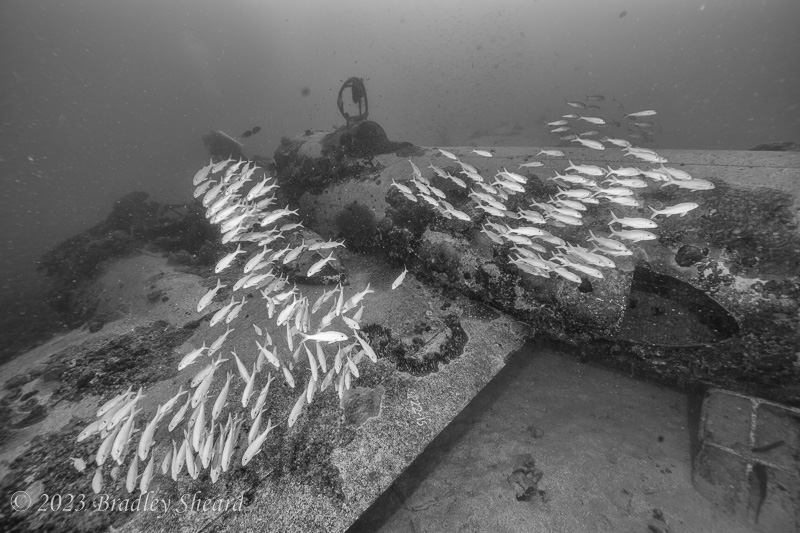 |  |
| A Japanese "Betty" bomber sunk in Truk Lagoon (October 2015, digital) | |
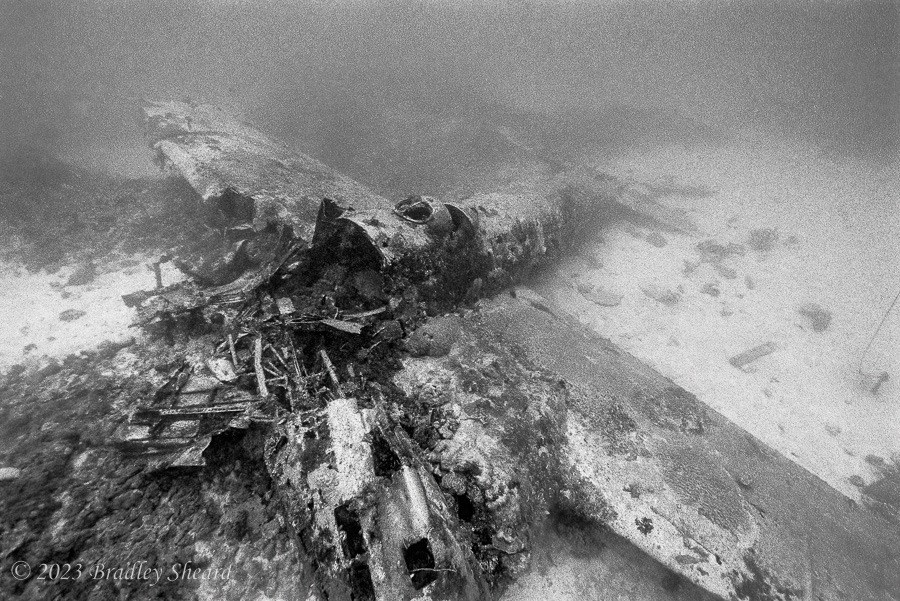 | |
| The "Betty" bomber in 2004 (March 2004, film) | |
|
The Mitsubishi G4M "Betty" was a two-engine land-based bomber used extensively by the Japanese during the war. Having excellent range and capable of carrying a large payload, its superior performance was possible due to its extremely light-weight constrution. This performance came at a cost for the crew, however, as the plane had no armor to protect its occupants and lacked self-sealing fuel tanks, and raids using the planes often suffered heavy losses. This specimen is a popular dive site in Truk Lagoon, where the fuselage is an easy penetration and always filled with large schools of fish. | |
| Aichi E13A "Jake" seaplane (Palau) | |
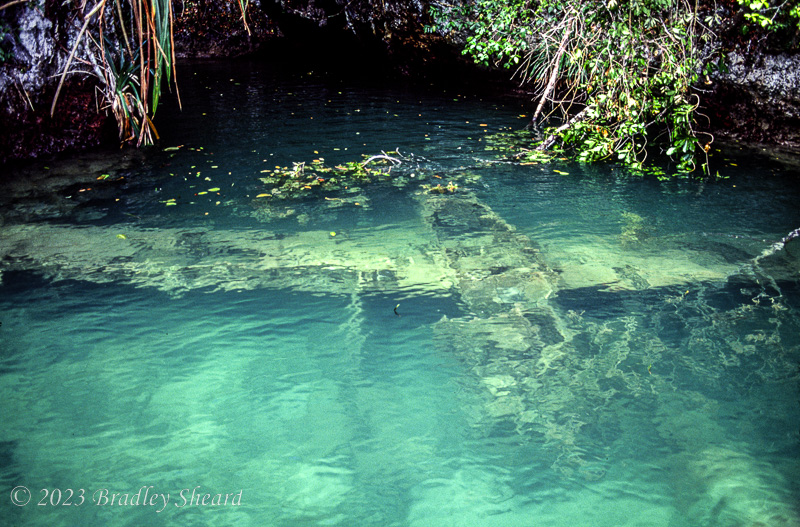 |  |
| A Japanese "Jake" reconnaissance seaplane hidden in the mangroves of Palau (2009, film) | |
|
The Aichi E13A "Jake" was a long-range seaplane used for reconnaissance by the Japanese Navy during the war. This specimen sits outside a small cave in the Palau Islands, where it was apparently tucked away to hide it from being sighted by Allied raiding aircraft. | |
| Dornier Do-26 flying boat (Narvik, Norway) | |
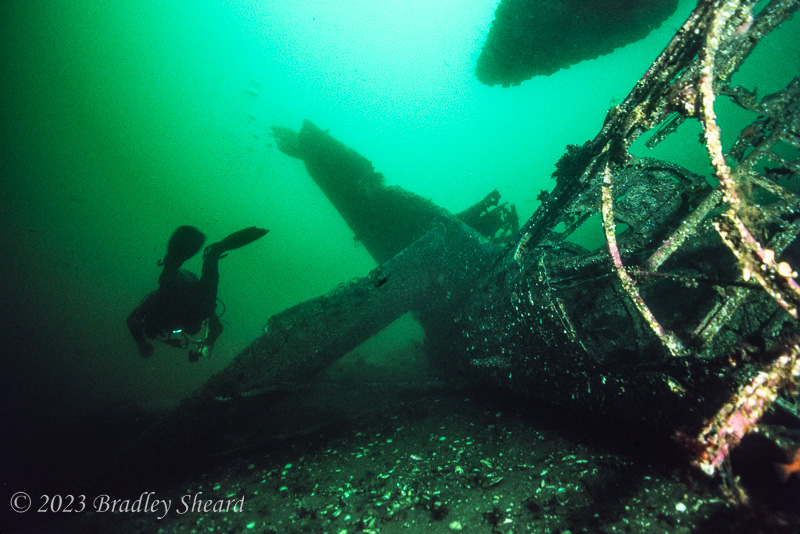 | 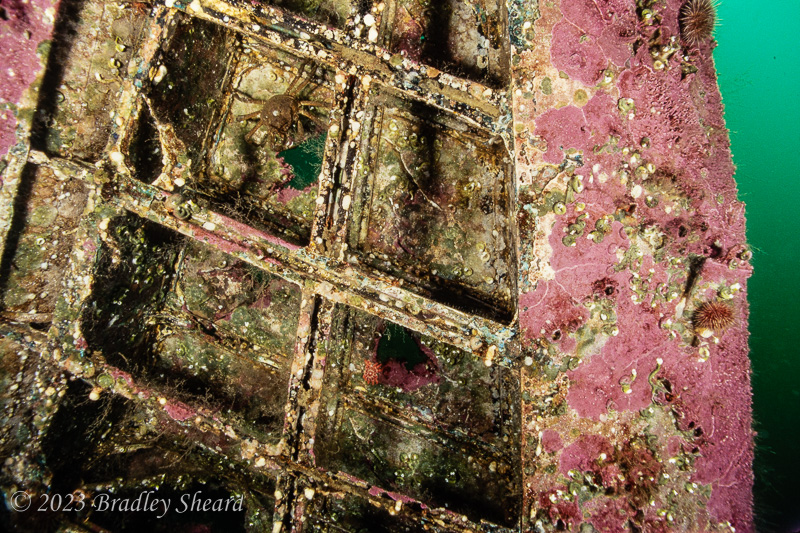 |
| Dornier Do-26 flying boat near Narvik, Norway. Tail section (left), wing detail (right) (August 2002, film) | |
|
The Dornier Do-26 was a four-engine German flying boat used during the war. The aircraft has a rather unique engine configuration, using two engines per nacelle, one pulling and one pushing, and the engines were actually diesels! This aircraft sits on the bottom of a fjord near Narvik, Norway. | |
| Bristol "Blenheim" bomber (Malta) | |
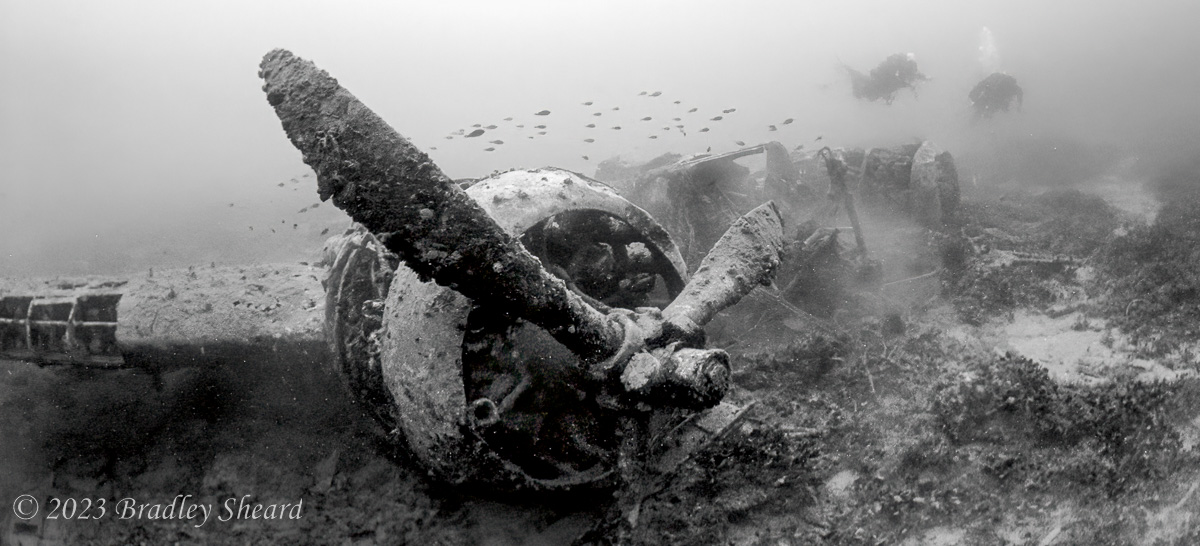 | |
| Bristol "Blenheim" bomber, Malta (March 2002, film) | |
|
The Bristol "Blenheim" was a two-engine land-based bomber used by Britain in the early years of the war. This aircraft sits in 135 feet of water off the island of Malta in the Mediterranean. | |
| Vought F4U "Corsair" (near Guam airfield) | |
 | 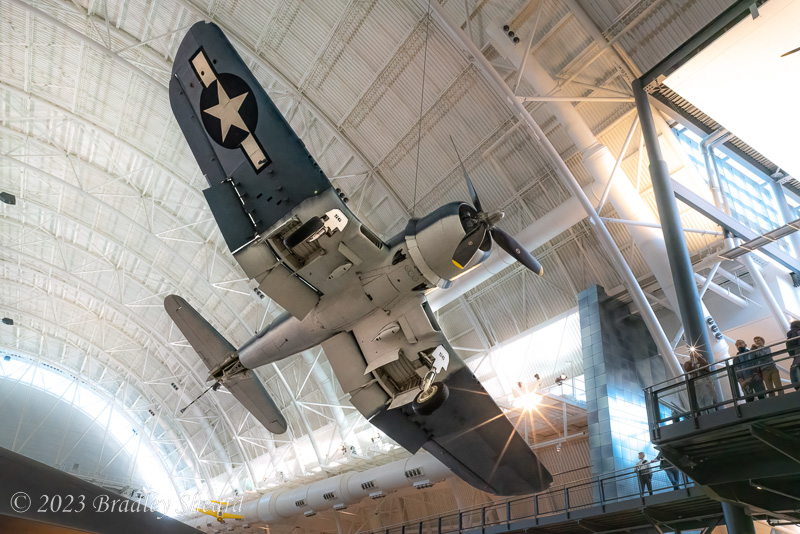 |
| partial fuselage and inner wing panel of F4U "Corsair" abandoned near Guam airfield (2009, film) | Vought F4U "Corsair" in the Smithsonian Steven F. Udvar-Hazy Center (digital, 2022) |
|
The Vought F4U "Corsair" was a highly-effective American fighter aircraft that saw both land-based and carrier-based service in the Pacific war. The aircraft had superior speed and rate-of-climb, but its early career was largly land-based, as there were development issues that initially made it unsuitable for aircraft carrier operations. The aircraft had a distinctive, inverted "gull-wing" making it easily identifiable. More than 12,000 aircraft were produced and it was still in use during the Korean war. The partial wreckage shown above sits abandoned near Guam's airfield. | |
| Consolidated B-24J "Liberator" (Palau) | |
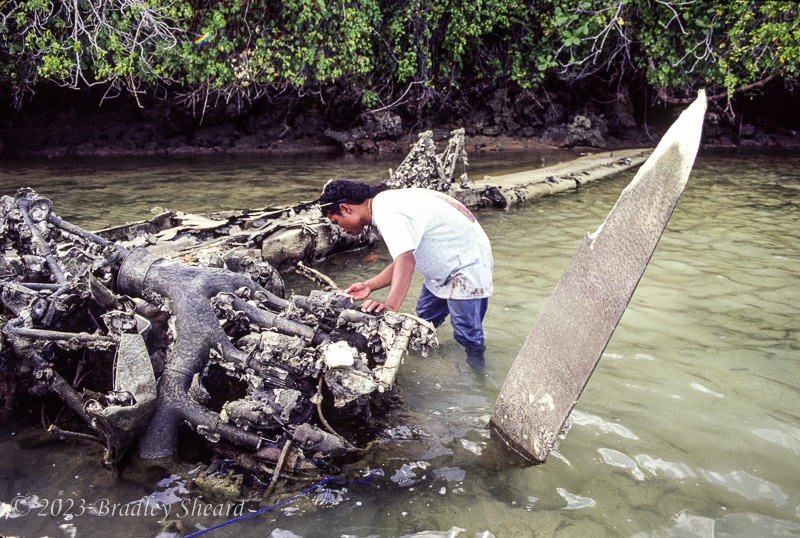 | 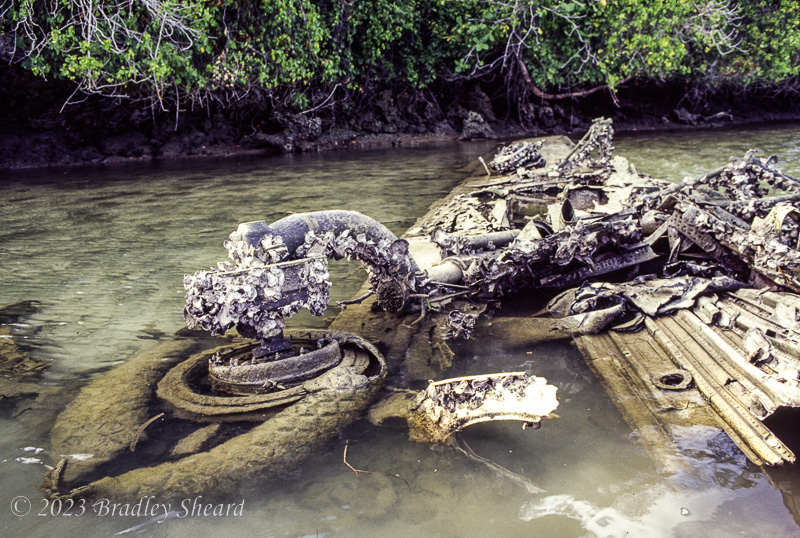 |
| partial wing, engine and landing gear of a B-24J bomber lying in shallow water in Palau (2009, film) | |
|
The Consolidated B-24 "Liberator" was an American heavy bomber used extensively in both the Pacific and European theatres. More than 18,000 of the aircraft were produced. This partial wreckage was seen on a kayak tour of the Palau Islands. | |
